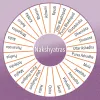Vastu and Science: Bridging Ancient Wisdom with Modern Understanding

Published Thu, Jan 2, 2025
Vastu Shastra, often referred to as the "science of architecture," is an ancient Indian system that emphasizes harmony between human dwellings and the natural environment. Derived from the Sanskrit words "Vastu" (dwelling) and "Shastra" (science), this practice dates back thousands of years and offers guidelines for designing homes, temples, and cities. While traditionally rooted in spiritual beliefs, many modern researchers have explored the scientific basis of Vastu principles. This blog delves into the intersection of Vastu and science, uncovering how ancient wisdom aligns with contemporary understanding.
The Core Principles of Vastu
Vastu Shastra is built around five fundamental elements—earth, water, fire, air, and space—and their interactions with human living spaces. It emphasizes orientation, spatial arrangement, and energy flow to ensure physical, emotional, and spiritual well-being. Key components include:
- Orientation: Aligning structures with cardinal directions to optimize natural light, ventilation, and energy.
- Balance of Elements: Ensuring harmony among the five elements for a conducive living environment.
- Energy Flow: Designing spaces to facilitate positive energy while minimizing negative influences.
How Does Science Support Vastu Principles?
Magnetic Properties of the Earth
The Earth’s magnetic field, created by iron particles in its core, plays a crucial role in Vastu. For instance, Vastu advises against sleeping with the head pointing north, as the repulsion between the body’s magnetic field and the Earth’s can lead to disturbed sleep and tension.
Earth’s Rotation
The Earth's rotation on its axis and its tilt toward the Northeast are significant in Vastu. Buildings aligned with this movement, with heavier weights in the Southwest and lighter weights in the Northeast, are believed to harmonize with the Earth's motion, promoting stability and energy flow.
Cosmic Energy
Vastu identifies two types of cosmic forces: subtle, positive energy and dense, negative energy. The interaction of these forces creates bio-energy or ‘Prana’, which is essential for life. Structures are designed to maximize positive energy flow, especially from the Northeast, while the Southwest is used to store energy by keeping it heavy and closed.
The Human Body as a Magnet
The human body functions as a magnet, with the head as the North Pole and the feet as the South Pole. This electromagnetic field, generated by the nervous system, is considered in Vastu designs, particularly for bedrooms, to enhance rest and well-being.
Sunlight
Vastu emphasizes the significance of the sun’s path and its effects on human health. The East direction, associated with the purifying morning sun rich in ultraviolet rays, is prioritized for entrances and living spaces. For instance, kitchens are often placed in the Southeast to benefit from the sun's UV rays during morning hours.
Geometry and Shapes
Shapes and geometry play a vital role in Vastu. The outer and inner shapes of objects are believed to influence energy. For example, the ‘Shree Yantra,’ composed of triangles, circles, and squares, is thought to emit positive energy. Building geometries are also designed to harmonize with directional frequencies.
Five Elements
Vastu integrates the five basic elements of nature—Earth, Water, Fire, Air, and Space—into its principles. Each element is associated with a specific direction: Earth with the Southwest, Water with the Northeast, Fire with the Southeast, and Air with the Northwest. Balancing these elements is key to creating harmonious living spaces.
Geopathic Stress
Geopathic stress, caused by natural or man-made disturbances in the Earth’s magnetic field, can negatively affect health. Vastu addresses these stresses through techniques to block, absorb, or mitigate harmful energies, ensuring the well-being of inhabitants.
Modern Applications of Vastu in Architecture
Vastu principles have found renewed relevance with the rise of sustainable and green architecture. Many architects integrate Vastu-inspired designs to enhance natural light, airflow, and energy efficiency. For example:
- Solar Passive Design: Aligning structures to optimize sunlight and reduce energy consumption.
- Natural Cooling: Using open courtyards and ventilation to minimize reliance on air conditioning.
- Biophilic Design: Incorporating elements of nature, such as greenery and water features, to improve mental health and productivity.
Vastu Shastra offers timeless insights into creating harmonious living environments. By integrating principles such as magnetic fields, sunlight, cosmic energies, and the five elements, Vastu bridges ancient wisdom with scientific understanding. Whether designing homes, offices, or communities, Vastu-inspired practices provide a pathway to spaces that promote health, happiness, and sustainability. For individuals, adopting Vastu doesn’t require complete adherence to traditional guidelines; small changes like optimizing natural light, improving ventilation, and decluttering can significantly enhance living spaces. Our Vastu consultation services offer personalized solutions to harmonize your living and working spaces with these principles. Whether you seek to improve your home’s energy flow or optimize your office environment, we provide expert guidance tailored to your needs. Our Corporate Vastu services focus on aligning business spaces with Vastu principles to boost productivity, foster positive energy, and create a balanced work environment. By integrating ancient wisdom with modern business needs, we help organizations thrive.
Latest articles




